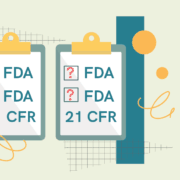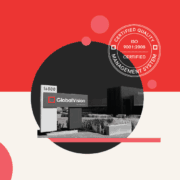Looking for Process Change? Think ISO 9000
Every company needs change, but in the midst of implementing it, only a few of them think about ISO 9000. It is mostly perceived as a purely technical standard that only specific industries have to deal with. But for the experienced business owner, the Geneva-based International Standards Organization (ISO) occupies a prominent place within the company’s strategies and policies, especially when those policies involve process changes.
The strict guidelines provided in the ISO 9000 standards help companies develop a quality management system (QMS) that fits their particular situation. Basically, ISO demands strict adherence to their quality system model coupled with thorough documentation of certain processes. Independent internal audits are also held regularly in order to review the company’s system, and if everything checks out, the certification is issued.
Highlights of ISO 9000
Since their first release in the 80s, the ISO 9000 family has become one of the world’s largest promoters for quality standards in almost every sector of the industry. Here are some of its leading traits:
- ISO 9000 guidelines focus mainly on quality but can be applied to all types of organizations.
- They are widely adopted in more than 100 countries.
- They have global recognition with more than 1 million company certifications worldwide.
- ISO 9000 helps all types of companies, no matter their size.
- Since they come from previous standards that have been replaced, they are the true form of evolution in the industry.
- The first step in becoming certified is to decide to create an effective QMS that complies with ISO criteria.
- Companies have to set specific objectives based on ISO guidelines and then make the necessary adjustments.
- Once all ISO requirements are satisfied, the company is held to independent audits for verification.
- The process is done once the company passes the audit, but certification only lasts three years, and in that time the company must go through additional inspections to ensure compliance.
How to Get Started
Companies wishing to be certified have to deeply examine their quality management system – or even create a new one – to make sure it meets the criteria of the ISO. This mission shows the company’s desire to satisfy its customers, reduce costs, and enter a more competitive market while also adhering to government regulations.
If you’re still not sure whether you want to implement a new system or just improve the one you already have, there are countless benchmarking tools that can help you decide. Most companies will also seek advice from specialized firms that help businesses fulfill ISO 9000 requirements.
One frequently asked question a lot of first-time companies raise is how to determine if a given standard actually complies with ISO criteria. You can consult with the World Standard Services Network, a publicly accessible site for standard organizations, to answer these types of questions.
Most newbie companies are also unclear about the existence of any regional standards that are equivalent to ISO 9000. Although the ISO doesn’t publish this type of information, an ISO member in your country will likely be able to give you this information.

Structure Your Quality Management System
ISO 9000 requires certain documentation regarding all processes that could affect the quality of your product or service. It also demands to keep records of specific activities as evidence of compliance and to contrast the actual results with what was planned. Finally, it requires the integration of a program that deals with any identified inefficiencies in your processes.
At first sight, it can all seem a bit confusing and time-consuming, but with a lot of organization, any company can get ISO 9000 certification. One of the best approaches to structure your QMS is to use the step system:
- First Step: Develop a Quality Manual, e.g., create and document policies that aim to satisfy all the standard requirements. This manual should describe your entire quality policy, including your mission, organization, specific policies, and responsibilities for each part of your company. Well-written quality manuals can also provide the benefit of acting as an advertisement for the quality of your services or products.
- Second Step: Document all of your processes. It includes their purpose, what will be done, when, how, where, and by who. Additional descriptions can also include the equipment used.
- Third Step: In this final step, you have to identify the word instructions, specific forms, procedures, inspections, records, test plans, and quality plans.
With a proper QMS in place, adequate documentation and an eventual ISO 9000 certification, any company can be confident that all processes will be made following specific requirements and meet the highest quality standards.

The Future of ISO 9000
As industries change, so do the standards that have shaped them. In fact, this is particularly true when it comes to ISO standards, which undergo periodic revisions. Special analysts state that, while it’s true ISO 9000 standards are continually evolving, recent changes are pointing to the same direction: a standardized format. The main reason behind this comes from the need to align all of the QMS together so they can handle many different standards.
On the other hand, recent ISO 9000 changes are moving toward more impartiality, competence, and consistency. The International Standardization Organization is currently trying to come up with standards where businesses and organizations practice those three principles in all their processes. The final goal is to create an industry where all companies across the globe use and recognize the same quality standards. By doing so, they assure everyone is playing on a more level field.
For instance, ISO 9001 is now one of the most prominent quality management standards in the globe that has been continually changed and revised over the years. The 9001 has moved from being a prescriptive, documentation-heavy guideline to embracing more measurement and increasingly subjective terms. Its revisions enable companies in any sector to adopt it, making it a gold standard for other ISO guidelines and an indicator of how they will evolve in the future.
By integrating the so-called ‘process approach’ – a method the ISO community has embraced in which company tasks are measured alongside coordinated goals – organizations can thoroughly evaluate the efficiency of all their processes by identifying the “weak link” in a sequence of activities. Because the ISO 9001 standard shifted toward the process approach, all of the requirements imposed on a company are now going into each and every one of their processes.
GlobalVision is an ISO 9001:2008 Certified Company
Since its foundation, companies like GlobalVision have been strong advocates for quality control in the packaging world, offering products that are specifically designed, built and released complying with the highest quality standards in the industry. Its ISO 9001:2008 certification provides worldwide recognition to their products, and it’s a testament to their commitment to providing only the best services to their customers.









